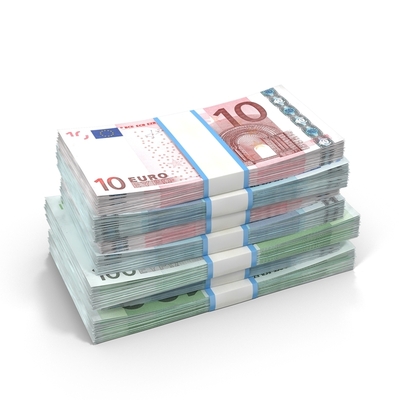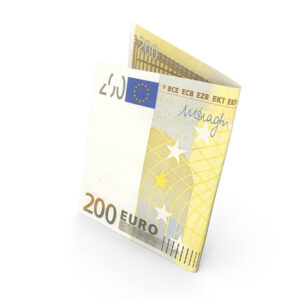Introduction
The 100 euro note holds a prominent position within the Euro currency system, serving as a symbol of economic strength and facilitating daily transactions. In this comprehensive blog post, we will delve into the intricacies of the 100 euro note for sale, exploring its design elements, advanced security features, and historical significance. By gaining a deeper understanding of this widely used banknote, we can appreciate its role in preserving financial integrity, fostering economic stability, and representing the unity of the Eurozone.
Design of the 100 Euro Note.
The 100 euro note exhibits a captivating design that combines both classical and contemporary elements. Explore the vibrant color palette, intricate patterns, and architectural motifs featured on the note. Learn about the portrait of Europa, the figure from Greek mythology after whom the continent is named, beautifully integrated into the watermark and hologram strip. Discover the symbolic representation of Europe’s rich cultural heritage and diversity through the design choices made for the 100 euro note.
Advanced Security Features
The 100 euro note incorporates sophisticated security features to protect against counterfeiting and ensure its authenticity. Explore the innovative elements such as the hologram stripe that displays dynamic colors and images when tilted. Learn about the security thread embedded within the note, featuring microprinting and a unique design that can be seen under magnification. Uncover additional security measures like raised printing, watermarks, and ultraviolet (UV) ink that enhance the difficulty of replication.
Historical Significance and Economic Impact
Trace the historical significance of the 100 euro note and its introduction into the Eurozone in 2002. Understand the rationale behind its denomination and its role in facilitating larger transactions within the region. Explore its economic impact, including its contribution to promoting economic stability, cross-border trade, and financial integration. Discuss the significance of the 100 euro note as a representation of the Eurozone’s strength and credibility in the global economy.
Everyday Use and Public Perception
Gain insights into the everyday use of the 100 euro note, including its acceptance and circulation within the Eurozone. Discuss its role in retail transactions, services, and travel-related expenses. Address common misconceptions or concerns regarding the use of large denomination banknotes, and highlight the convenience and ease of use associated with the 100 euro . Explore public perception, including the trust and confidence placed in this banknote by both businesses and individuals.
Frequently Asked Questions (FAQs) and Answers:
FAQ: What are the security features of the 100 euro ?
Answer: The 100 euro incorporates advanced security features such as a hologram stripe. Microprinting, raised printing, watermarks, and ultraviolet (UV) ink. These features enhance the note’s security and make it difficult to counterfeit.
FAQ: Can I use the 100 euro note in all Eurozone countries?
Answer: Yes, the 100 euro is accepted as legal tender in all Eurozone countries. It can be used for transactions in any country that has adopted the Euro as its official currency.
FAQ: What is the historical significance of the 100 euro ?
Answer: The 100 euro note was introduced in 2002 as part of the Euro currency system. It represents the economic integration and stability of the Eurozone and plays a vital role in facilitating larger transactions within the region.
FAQ: Are there any limitations on using the 100 note?
Answer: There are generally no specific limitations on using the 100 euro . However, it’s important to note that some businesses may have difficulty providing change for larger denominations. So it’s advisable to carry smaller denominations for convenience.
FAQ: How can I ensure the authenticity of a 100 euro ?
Answer: To ensure the authenticity of a 100 euro , check for security features such as the hologram stripe, watermark, raised printing, and UV ink. Familiarize yourself with the characteristics of genuine notes and compare them to any suspected counterfeit notes.
FAQ: Can I exchange damaged or torn 100 euro notes?
Answer: Generally, central banks within the Eurozone may exchange damaged or torn 100 euro notes. Provided that a significant portion of the note remains intact. Contact your local bank or financial institution for specific guidance on exchanging damaged notes.
Conclusion
The 100 euro note stands as a testament to the stability, unity, and cultural diversity of the Eurozone. Its exquisite design, advanced security features, and historical significance make it a vital component of the Euro currency system. By understanding its design elements, security measures, and broader impact, we can fully appreciate the role that the 100 euro note plays in facilitating transactions, maintaining financial integrity, and symbolizing the strength of the Eurozone.













"Hi, I’m Lisa from Charlotte. Aaron’s customer service at buydollarbills.com was superb. He was very helpful and made sure my…
“I bought a batch of real dollar bills, and they are of excellent quality, each featuring a unique serial number.…
I recently purchased a set of real dollar bills, and I couldn't be more impressed. The quality is outstanding—each bill…
“Perfect transaction for Dollar bills. Aaron Walker’s customer service was excellent and made the whole process seamless. 💶👏”
“I’m very impressed with the real dollar bills I received. Each bill is in mint condition and has a unique…
"Fantastic service for Euro bills! Aaron was very professional and ensured my order was processed efficiently. 💶🌟🌟🌟🌟🌟"
"Superb quality Euro bills and outstanding support from Aaron. He was very attentive and resolved my concerns quickly. 💶🌟🌟🌟🌟🌟"
"Great experience with Euro bills. Aaron’s customer service was very responsive and made sure I got the best product. 💶🌟🌟🌟🌟🌟"
"High-quality real dollar bills and excellent customer service from Aaron. His assistance was key to a smooth transaction. 💵🌟🌟🌟🌟🌟"
"Very pleased with the real dollar bills. Aaron’s customer service was outstanding—he made the process effortless and enjoyable. 💵🌟🌟🌟🌟🌟"
"Ordered Euro bills and had a smooth experience. Aaron’s support was incredibly helpful, and the bills were perfect for my…
"Great experience with buying Euro bills. Aaron was very professional and ensured my order was handled efficiently. 💶🌟🌟🌟🌟🌟"
"High-quality real dollar bills and excellent customer service from Aaron. His assistance was key to a smooth transaction. 💵🌟🌟🌟🌟🌟"
"Euro bills were perfect for my project. Aaron provided fantastic customer support and made sure everything went smoothly. 💶🌟🌟🌟🌟🌟"
"Excellent service for Euro bills! Aaron was very helpful and made sure my order was processed quickly and accurately. 💶🌟🌟🌟🌟🌟
"Very satisfied with the real dollar bills I ordered. Aaron’s support was exceptional—quick, friendly, and very helpful. 💵🌟🌟🌟🌟🌟"
"Hi, I’m Laura from Sacramento. Had a smooth experience with buydollarbills.com. Aaron’s customer service was exceptional—he was very helpful and…
Aaron at buydollarbills.com provided excellent service! 💵 His knowledge and customer care made the process of buying collectible bills smooth…
Aaron provided fantastic service at buydollarbills.com! 💵 His detailed advice and prompt responses made buying collectible bills easy. 💰 Aaron’s…
Aaron’s customer service at buydollarbills.com was exceptional! 💵 He offered clear explanations and guidance throughout the buying process. 💰 Aaron’s…
Aaron’s service at buydollarbills.com was excellent! 💵 He was knowledgeable and patient, helping me with all my questions. 💰 Aaron’s…
“Fantastic quality Dollar bills and Aaron White’s support was amazing. Everything went smoothly, and I’m very satisfied! 😍💶”
"Aaron’s support at buydollarbills.com was excellent. He was very attentive to my needs and made sure my dollar bills were…
Aaron at buydollarbills.com provided outstanding service! 💵 He was very helpful and provided great advice on selecting the right bills.…
I had a great experience with Aaron at buydollarbills.com! 💵 His service was top-notch, and he provided clear, helpful information…
Aaron provided fantastic service at buydollarbills.com! 💵 He was very knowledgeable and answered all my questions with patience. 💰 Aaron’s…
"I’m very happy with buydollarbills.com. Aaron’s customer service was top-notch, addressing all my queries and ensuring my order was perfect.…
"I’m thrilled with buydollarbills.com! Aaron in customer service was exceptionally helpful, and the quality of the dollar bills surpassed my…
Excellent service from buydollarbills.com! Aaron answered all my questions promptly and with great patience. The dollar bills arrived quickly and…
"Buydollarbills.com is my go-to for collectible bills. Aaron's customer service is outstanding—friendly, efficient, and very knowledgeable. The bills always exceed…